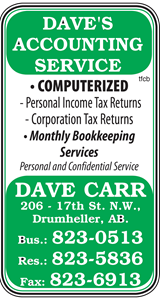
Dear Working Wise:
I have a problem employee. She is rude to my customers, she doesn’t complete all of the tasks that must be done every day, she plays the VLT machines instead of serving customers and she calls in sick a lot, but only on the weekends. Is this enough to fire her and not pay severance? Signed, Bothered Bar-owner
Dear Bothered:
Employees have the right to quit and employers have the right to terminate employees under Alberta’s Employment Standards Code. But, these rights come with responsibilities. The most important one is providing adequate notice.
The length of notice depends on how long the employee has worked for you. In Alberta, the minimum notice required is: one-week’s notice for between three months and two years of service. Employees with two to four years of service are entitled to a minimum of two-weeks notice.
The notice period continues to increase with length of service. For a complete list of notice periods, visit http://humanservices.alberta.ca/es and click on the Termination of Employment and Temporary Layoff fact sheet.
You can choose to give termination pay in lieu of the notice period. A combination of written notice and pay is also acceptable. Employers must pay all wages, overtime, general holiday pay and vacation pay owed to the employee within three days following termination of employment.
There are a number of circumstances when an employer does not have to give notice or termination pay. These circumstances, as you mentioned in your question, are for “just cause”.
Examples just cause include:
- willful misconduct, like theft or deliberately causing damage to the business;
- disobedience, like failure to comply with company policy; and
- deliberate neglect of duty, like not showing up or leaving without permission.
Employers need adequate documentation to back up their decision to terminate an employee for just cause.
Documentation provides a record of unacceptable employee behaviour, proof the employee was made aware of their performance problems, and evidence of the employer’s efforts to correct the behaviour.
Documentation can include things like: details of meetings with the employee, copies of emails, letters of reprimand, or time sheets showing missed hours.
When an employee is terminated for just cause, the employer still must pay all wages, overtime, general holiday pay and vacation pay owed to the employee within 10 days of termination.
Unfortunately, I can not give you a definitive answer to your question. Employers who terminate employees for cause risk paying expensive wrongful dismissal cases if they lack adequate proof.
A lot depends on how serious the misconduct has been, how many times it has happened and how well you have documented it.
To explore how strong your case is for just cause, you should seek legal advice. The Law Society of Alberta offers a free lawyer referral service by calling 1-800-661-1095.
For more information on employment standards related to terminations, visit http://humanservices.alberta.ca/es or call the toll-free Alberta Employment Standards phone line at 1-877-427-3731.
Do you have a work-related question? Send your questions to Working Wise, at charles.strachey@gov.ab.ca. Charles Strachey is a manager with Alberta Human Services. This column is provided for general information.





























